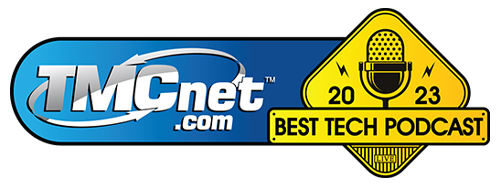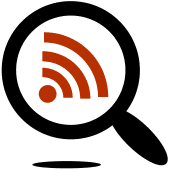EP 36: What's New in Microsoft Teams
Posted on December 15, 2023 by Fusion Connect
In Episode 36 of Tech UNMUTED, Santi Cuellar discusses the recent transformations in Microsoft Teams. As the go-to collaboration app in today's hybrid and remote work environment, Teams has undergone significant updates. Santi highlights key changes, focusing on features he finds most impactful. He guides listeners through Microsoft's Roadmap for staying updated and explores enhancements like the desktop-to-web browser join experience, customized watermarks, and the introduction of town halls. The episode also touches on new workflow automations in channels, IntelliFrames for Teams rooms, and the necessity of background blur in Teams Premium. Join us to stay ahead in the ever-evolving world of Microsoft Teams.
Watch & Listen
Tech UNMUTED is on YouTube
Catch up with new episodes or hear from our archive. Explore and subscribe!
Transcript for this Episode:
INTRODUCTION VOICEOVER: This is Tech UNMUTED. The podcast of modern collaboration – where we tell the stories of how collaboration tools enable businesses to be more efficient and connected. With your hosts, George Schoenstein and Santi Cuellar. Welcome to Tech UNMUTED.
SANTI: Welcome to the latest episode of Tech UNMUTED. Today we're going to be looking at the many changes that have occurred in Microsoft Teams. Over the last few months, Microsoft just keeps on enhancing Teams to the point where it gets a little tricky to keep up with all the changes. Since Microsoft Teams is pretty much the leader when it comes to the collaboration app for today's hybrid, remote, and flexible work, I thought it'd be good to just take some time to review what are these changes.
Now I won't be able to review everything, but I am going to touch on the ones that I think are the most important, at least the ones that I prefer. I'm also going to show you where you can find this information so you can stay on top of all the latest and greatest things that are happening with Microsoft Teams. Without any further delay, I'm going to share my screen. Whenever you want to learn what is the latest that's happening with the Microsoft 365 suite of products, the best place to go is to Microsoft's own Roadmap. They have a Roadmap. It's easy to find. You just search for Microsoft 365 Roadmap, and it will bring you here to the Microsoft 365 Roadmap page.
Now you can do several things here. You can filter by product, by platform, by what's been rolled out, what's still in development. There's quite a bit you can do here. The way I have it set up is I have Microsoft Teams as the key platform that I'm looking for, and I check off where it says launched. I want to know what has been released. If you want to look at a future state, then you can look at what's in development. For today's podcast, I just want to look at what has been launched. Let's scroll down and let's take a look. I'm only looking at the months of October and November. This is, again, November and October of 2023.
As we head into December of 2023, we will now get a sense for what's happened within Microsoft Teams, which is quite a bit. I want to start with the second one right here. Microsoft Teams, desktop to web browser. This is rolling out in November. I'm working backwards. I'm going from November down to October. Desktop to web browser join experience. Listen to this. Very cool. Schedulers can enable the have attendees join from a web browser setting so that attendings joining the virtual appointment on the desktop will be routed to the Teams web browser experience.
This allows attendees to have access to engage features like raising a hand or have live reactions. This is for virtual appointments, which is a premium feature of Teams. Basically, if you're going to schedule a follow-up virtual appointment with somebody, now the individual can go from the desktop version, which is using Teams, and transition to web seamlessly. That's nice. Remember, virtual appointments, these are appointments with customers or potential customers. These are people who want an appointment with somebody at your company. Good feature. It was last modified November 10th, and it looks like it's going to be available worldwide.
It's actually now in general availability. That's a good one. This customized watermark is a premium feature. That means you got to have Teams Premium for this. Teams Premium, one of the things it allows, it allows a layer of security. When you're sharing a content, you're able to put a watermark. That watermark typically is like your email address, and it's watermarked all throughout. The nice thing about being able to customize that is that you can actually now determine what that looks and feels like. Teams meeting organizers, so somebody who's actually creating the meeting, now have the flexibility to choose between a single watermark or a repeated watermark.
The original watermark was repeated. It would just be your email address constantly repeated all across the screen of your video and of your content. Now you can have just a single watermark displayed, so it's not as aggressive, I guess. That's nice to be able to do that. It is available worldwide, and it was last modified just not long ago, November 28th. It is generally available. That's a good one. In the App Store, you can now submit ratings and reviews. Every other App Store does it, but I guess it wasn't available in the Teams App Store. Now a customer can go in and provide a review and a rating of a specific app that has been launched into the App Store.
That's great feedback. I love seeing that feedback. When I try to make a decision as to whether or not I want to use an app, I typically want to know how others have rated it or what their experience has been. This is a good feature. This is actually now in October. October is when it rolled out, but it was last modified November 2nd. It is generally available and it is also worldwide. It's good. Let's talk about town halls. Now I have town halls repeated twice. Let me read the first one and I'm going to skip down and read the second one and show you the difference. We now have what's called town halls. Town halls is replacing the legacy live event.
When you were in Teams and you went to your calendar and you wanted to schedule a calendar, a meeting, one of the options that was in there was a live event. Live event is going away and it's being replaced with town halls. That's really what it is. Right now you see both of them in the menu, eventually, live events goes away. It's going to be replaced with town halls. Set up and host a large-scale event across an organization with the familiar Teams app that you use for webinars and meetings. Listen carefully. Town hall capabilities include new meeting templates and a capacity for up to 10,000 attendees. It also has support for third-party ECDN.
That 10,000 attendee number is the one I want you to pay attention to. If you do not have Teams Premium-- this is standard. You have standard Teams. You have available to you town halls. You can have a large-scale event for your internal employees, up to 10,000 attendees. Let me scroll down just a tad because there's another mention of town halls down here, but it has "Premium." This is for Teams Premium. Let me expand this and show you the difference. Same town hall experience, but if you have Teams Premium, your number of attendees now increase to 20,000. That's the major difference between the two. That and the fact that it supports first-party ECDN versus third-party.
Really, it's the attendees that's a big deal. If you have Teams standard, you want to have a town hall, you can have up to 10,000 people attend. If you have Teams Premium and you want to have a town hall, you can have up to 20,000 people attend. 20,000 people in one town. Now town halls are typically one-too-many. The way that works is there's not mics and cameras and back and forth and one. Actually, I believe if I'm not mistaken that the only way you can interact would be with a moderated Q&A, but it's a one-to-many ratio. This is not your typical meeting, but it's nice to be able to have that type of capacity. Those are the difference between the two.
Moving back up. After town halls, we have something called workflows in channels. Oh, this is great. In Teams, you can create a team and underneath a team, you can have separate channels. For example, you can have a project management office as a team and then each individual project could be a separate channel underneath that. Now, if you go to those channels and you click on the three little dots for those channels and you get that submenu, there is a new option in that submenu called workflows. What is workflows? Automation. It's power automation built into your channels. Everything from automating notifications to push notifications, to alerting people, to sending out emails, all this automation now, all this workflow automation can be done. Maybe it's something as simple as, "Hey, if somebody adds something to this channel, send me an alert, or if somebody mentions my name, let me know," or something to that effect, or, "Allow people to create a task from here."
The list of workflow automations is significant. It is very long. The best way, honestly, to experience this is just go to your Teams environment, click on one of your teams, choose a channel, click the three dots, let the little submenu pop open, go to workflow, and just explore. You're not going to break anything, but you're going to see a lot of great prepackaged power automate workflows. Of course, you could always create your own, but there's plenty there already. That's a great, great feature. That's going to be a real productivity hack because trying to manage channels could get tricky. If I post something or if I added something to a channel, now I don't have to go and let everybody know, "Hey, guess what I just did." We can automate that.
If you start to think about those mundane tasks that are related with collaborating through a channel and automate them, big productivity hack. Take a look at that as well. Now you can also choose how you're going to notify people when you publish a task. One of the thing is you have a list of tasks in a channel, you need people to pay attention to that list. They have, I'm sure, some kind of a task assigned to them. It used to be that everybody would just get blasted even if they weren't part of the plan. That can get annoying because now you're getting hit with notifications that don't have to do with you because you're not assigned a task. You're just part of the channel, but you're not assigned a task.
You can now choose how that notification occurs. It says here under your Teams activity feed, you can choose all owners and members, that's everybody, owners only or no one. If you own a task, you can be notified and you can choose to just do them and them only. If you use the shift app, so companies that have shifts and they use the Microsoft shift app, there's some scheduling improvements. I can't speak to it because we don't really use the shift app. I've never used the shift app before, but there is a shift app available. That's good to know. This is very cool. I like this. These are IntelliFrames. This is the next one. Enabling cloud IntelliFrames for Teams room.
What is an IntelliFrame? I want you to picture this. Let's say that we're in a physical conference room with a physical conference room table and there's five of us sitting around this table. We are facing a Teams room camera. Teams room is equipment that is Teams-enabled, but it is traditional conference room equipment. In a traditional conference room with a video camera, you would see everybody sitting. On one screen, you would see everybody sitting at the table, "Hey, here we are. We're having a meeting." With IntelliFrame, that one camera will create this frame, this little square of me and me alone and then of whoever else is in the meeting with me.
They will show up as separate tiles in your Teams environment. Now you don't feel like, "Okay, everybody has their own individual cameras except for these three because they're in a conference room." No, they'll have their own individual frame as well. That's the IntelliFrame. It just keeps the same look and feel of a traditional Teams meeting even though they're physically located all in one room in a conference room staring at one camera. Very cool technology. I really do like that. The last one I'm going to just touch on right here is the required background blur when no background is selected. This is only available in Teams Premium.
Guess what? When enabled, you have to enable it, if for some reason you didn't choose a virtual background for you, by default, it'll blur your background. That's nice because people won't get distracted with anything that's going on in your background and you don't have to remember about, "Oh, maybe I should blur that." It'll do it for you automatically. That is only available, again, with Teams Premium. It won't be a feature that you can turn on with the standard Teams. There's a lot going on in Teams. There's just a ton of stuff. Of course, you can always go back and start scrolling down and look at all the multiple pages of all the features and enhancements over time that Microsoft has invested into Teams.
This is a great resource for you. Again, it's easy to find. It's basically the Microsoft 365 Roadmap. Just either search on Bing or Google or whatever search engine you're using, and it'll pop right up. It'll bring you right to here. Then you can go ahead and just do your filters. This is a great way of staying on top of everything that's happening in the world of Microsoft 365. I hope you found that helpful because I know it's hard. You use Teams on a regular basis, and sometimes you find these new features by accident because something changed or you clicked on something and something just behaved differently.
We're trying to see if we can proactively bring you a little bit of awareness of some of the new things that are in Teams. I'll try and do this every couple of months because there'll always be something new. We'll post these so that it's just a quick reference and a quick way of saying, "Oh, yes, I like that feature," or "I saw that, but I wasn't sure what it meant." Maybe this type of podcast would help you. Anyway, folks, this does bring our podcast to an end. This is a good time to remind you to subscribe to Tech Unmuted, your favorite podcast.
This is where we talk about technology trends. We talk about all things that Microsoft is doing, artificial intelligence, business transformation, collaboration, you name it, but in a very easy-to-digest format. Subscribe. It would help us a lot, and it will keep you informed as to new episodes that get released. Until next time, folks, stay curious, stay connected.
CLOSING VOICEOVER: Visit www.fusionconnect.com/techunmuted for show notes and more episodes. Thanks for listening.
Episode Credits:
If you want to give shout outs to specific people who helped with the episode.
Fact-checking by: Joe Jimmy Jim
Additional Video Editing by: Some Famous Person
Produced by: Fusion Connect
Citations:
Listen on Your Favorite Podcast Player:


Expert insights, exclusive content, and the latest updates on Microsoft products and services - direct to your inbox. Subscribe to Tech ROUNDUP!
Tech UNMUTED, the podcast of modern collaboration, where we tell the stories of how collaboration tools enable businesses to be more efficient and connected. Humans have collaborated since the beginning of time – we’re wired to work together to solve complex problems, brainstorm novel solutions and build a connected community. On Tech UNMUTED, we’ll cover the latest industry trends and dive into real-world examples of how technology is inspiring businesses and communities to be more efficient and connected. Tune in to learn how today's table-stakes technologies are fostering a collaborative culture, serving as the anchor for exceptional customer service.
Tech UNMUTED is a production of Fusion Connect, LLC.

 Amazon Music
Amazon Music Podcast Index
Podcast Index TuneIn
TuneIn Listen Notes
Listen Notes